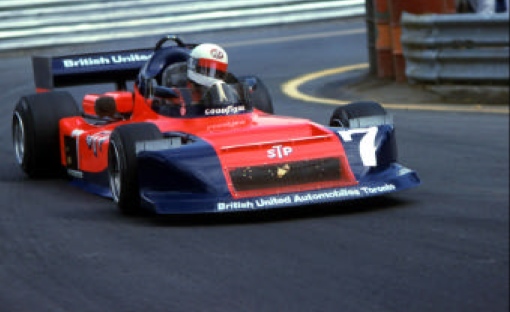Hamilton, Ontario, Canada loved 1978 Formula Atlantic race, but…….
Race Hamilton was held early in August 1978 on the streets of the city’s downtown core — Main, King, York, Bay, MacNab, and Park. The race was proposed to the city in May 1977 by Larry Russell and his company, Triess Promotions. The downtown circuit was the final route for the Formula Atlantic cars, as a course going up and down the Clairmont Access or along the former Highway 102 between McMaster University and Dundas was considered not viable.
Street racing was in vogue at the time, and very few events were held in North America through city streets. It would be another eight years before this mode of racing became very successful with the running of the Molson Indy in Toronto.
After numerous meetings with politicians, city staff, and concerned citizens, Russell and his group had everything in place, or so they thought, for a Sunday afternoon start on the 1.3-mile course featuring several support races and the 73-lap Atlantic race. Big-name drivers such as Bobby Rahal, Keke Rosberg, and Price Cobb were all in line for the $10,000 first-place prize money.
 |
| Bill Brack in his STP Special March 78B in 1978 |
“It’s going to be super in Hamilton," said Bill Brack of Toronto, one of Canada’s top formula car drivers at the time and a top contender. “Right now, I’d have to say that Formula Atlantic racing, our type here in North America, is second only to Formula One in road racing today," he said in a Hamilton Spectator interview.
“This is a prestige series," Brack added. “Our series isn’t meant for a one or two-car race. Our cars are suited for a street race."
But the race began five hours late, due to insurance issues. The company providing the coverage was not happy with the dirt-filled safety barriers on the course, which caused slippery racing when a car punted the barrier, spilling dirt onto the racing surface.
After these repairs, the estimated 60,000 people who attended the race were finally able to see what they came to see, 29 cars ready to do battle through the streets of Hamilton.
And Brack, a former Canadian Driving Champion, started on the pole for the race. But his lead was short-lived, as he was involved in a first-lap incident with Rahal, crashing into a tire wall at York and Hess Streets.
“Bill (Brack) kept coming over towards me and I hit the wall," Rahal said in a post-race interview. Rahal’s car hit the wall and he bumped into Brack, putting Brack out of contention.
“I’m sure when he cools down, he’ll realize that it was just part of the race," Rahal continued. “It was a wild moment for me."
Rahal would go on to become a dominate force in IndyCar racing, and continues in the sport to this day.
There were only 16 cars left at the end of the abbreviated race, called after just over the halfway mark due to darkness. The race was won by Finnish star Keke Rosberg and his Ford-powered Chevron B-45, and he wasn’t a happy winner.
“I was very tired by the end of the race," he said. “It was getting very difficult to concentrate. They should have stopped the race 10 laps earlier."
Texan Price Cobb took second in his Carter Chev-Olds sponsored Ecurie Canada March. Rahal, of Connecticut, placed third in his Ralt-Ford, another future IndyCar star, Danny Sullivan of Kentucky, was fourth, and Davina Galica of England placed fifth.
But the race was a financial and sports disaster.
Of the estimated 60,000 in attendance, organizers figured that more than half of those watched the race for free, breaking down temporary barriers, climbing on the roofs of the many buildings in the area, and wreaking widespread damage to public and civic property.
Police estimated 300 to 400 fans were on the roof of Sir John A. Macdonald Secondary School, and some fans had managed to get on the roof of City Hall.
The drivers in the Formula Atlantic race were not pleased with the outcome, as they were credited with only half points for their efforts in the series because the race was cut short, although full prize money was awarded.
Triess estimated it lost about $250,000, along with providing help with the massive cleanup needed to get life back to normal in the core of the city.
“The thing is, we would never want to bother the city with this again. The cleanup is going to be horrendous," said Russell after the race.
Reg Wynott, President of Triess, said after that the issues with the insurance policy messed things up from the start. Originally a $2 million policy was demanded by the city and the region, then that number turned to $5 million. The K&K Insurance Agency felt the track was unsafe, and would not sign off on the higher $10 million policy until all the safety demands had been met, which threw the race schedule awry.
And Wynott said he thought the race was good for the city, but wasn’t eager to start working on a race for 1979.
“In the next few days or so things will start to wind down a little," he said in a Spectator interview. “We’re all pretty tired right now, then we’re going to have a real long, hard look at it."
Tim Miller is a longtime motorsports writer and author of several books on the sport. Thespec.com
